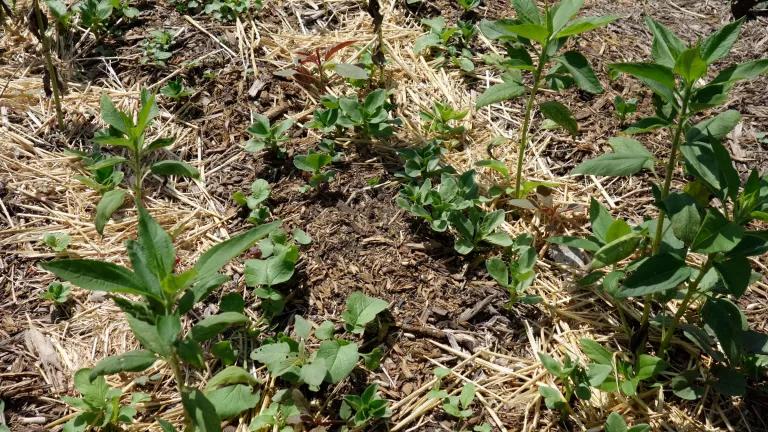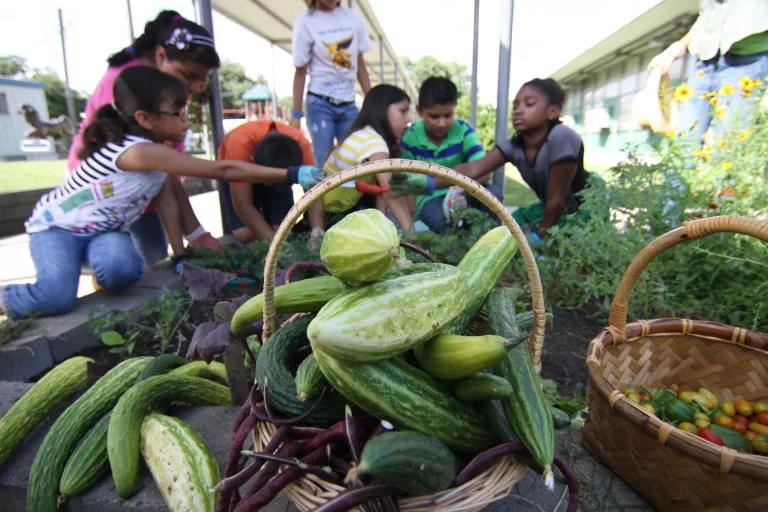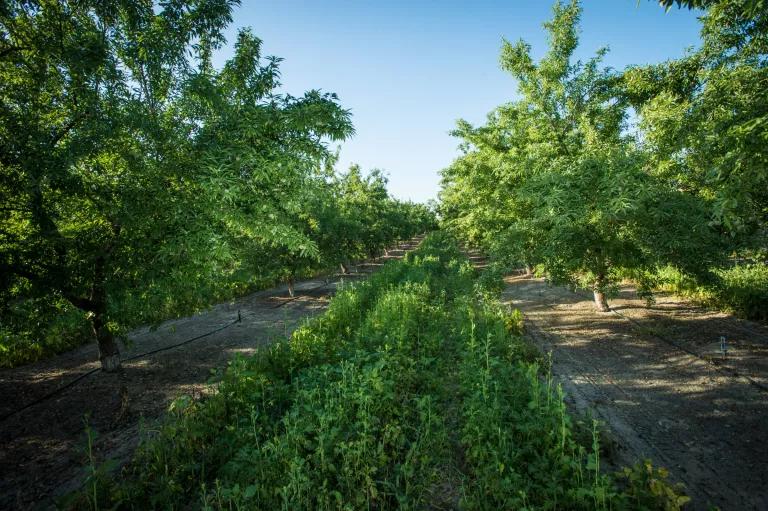Proposed Newsom Budget Doubles Down on Climate, Food, and Ag
Governor Newsom’s newly released proposal rightfully recognizes the profound impact of climate change on our state’s food and agriculture system and the need for significant investment.

Sunchoke plants growing at LA Green Grounds Teaching Garden in South Los Angeles, California, on July 14, 2020.
Governor Newsom’s newly released 2022-23 budget proposal rightfully recognizes the profound impact of climate change on our state’s food and agriculture system and the need for significant investment to ensure that it is resilient, healthy, and equitable.
This budget picks up where the 2021 budget left off, proposing another substantial influx of resources for programs that help our farmers and ranchers transition to climate-smart agriculture practices. It also includes significant funding to build new markets for climate-friendly and historically underserved producers through California’s new Farm to School program—a program that helps bring healthier food to kids who need it the most. The budget specifically proposes:
- $85 million for the state’s popular Healthy Soils Program, which provides grants to farmers and ranchers to use practices that build soil health.
- $20 million to bolster the State Water Efficiency and Enhancement Program, which provides grants to farmers to install and/or upgrade to more water efficient irrigation systems.
- $15 million to protect and build pollinator habitats.
- $22 million for technical assistance and Conservation Management plans, including plans to help farmers transition to organic agriculture.
- $450 million over three years to fund school kitchen upgrades that will enable schools to prepare local and minimally processed foods.
- $33 million for expanding the Farm to School program, including $3 million for staffing and $30 million in additional grant funding.
Through these investments in school food programs, the Newsom administration is setting up public schools as key markets for farmers and ranchers that use climate-smart practices. California’s Farm to School program, first piloted in 2020, encourages schools to buy from certified organic producers, those in the organic transition process, those that participate in the Healthy Soils Program, and more. Unfortunately, even with nearly half a million dollars proposed over three years, this investment doesn’t capture the entirety of the need. UC Berkeley researchers estimate that CA would need to invest nearly $6 billion for schools throughout the state to make necessary upgrades that enable scratch cooking.
We hope this proposed budget allocation will be the start of a long-term investment plan that schools can rely on to update outdated facilities. These resources would serve as an essential intervention if California is to realize the full potential of our Farm to School program to build markets for climate-friendly agriculture and change the trajectory of the school meal experience for over six million students.

A group of children harvesting cucumbers, squash and peppers from a garden at their school, to be shared with those in need in the community.
Our food and agriculture system is broader than on-farm practices and markets, and includes farmworkers and the regional food systems infrastructure that gets food from fields to plates. In last year’s budget, the Governor dedicated an entire chapter to sustainable agriculture and included funds for farmworkers and regional food systems infrastructure. Unfortunately, this year’s budget proposal does not include those critical elements. If California wants to transform agriculture into a climate solution and help the sector be carbon neutral by 2045, we must transition our entire food supply chain–from production to processing to transportation to distribution to consumption. We will address these food system budget gaps in our advocacy this coming year.
The budget proposal also includes $382 million for nature-based solutions that “create economic opportunity in nature-based sectors such as agriculture” and another $768 million (a carryover from last year’s budget) to help implement state strategies, including the Climate Smart Strategy. While these allocations represent the substantial financial investments needed to scale up climate solutions on natural and working lands, the lack of detail provided for these pots of funding leave us with more questions than answers. For example, how will the Governor’s Office make sure money is not spent subsidizing industrial agricultural practices like monocropping and expanding production of water-thirsty crops, especially as the state prepares for future droughts? How will the state make agricultural land more affordable for the next generation of growers while ensuring money is not redirected to already wealthy landowners? How can an organic transition program work in California? NRDC has submitted several rounds of public comments asking and answering these questions, and we will continue advocating for guardrails as the budget is negotiated.

Cover crops in an almond orchard at Mota Ranch in Livingston, California
The Governor has shown that California takes the climate crisis seriously with the proposed budget. The final budget–which will be passed later this summer–must include some critical guardrails for funding related to natural and working lands while also encouraging agencies to work together to deploy the funds to maximize benefits. This coordination will be critical as the state implements the Climate Smart Strategy and 30x30 conservation efforts and as the California Air Resources Board updates the Scoping Plan to meet California’s 2045 carbon neutrality goal.




